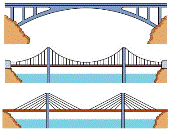Civil and Environmental Engineering
Document Type
Article
Date of this Version
2011
Citation
Saunders SE, Yuan Q, Bartz JC, Bartelt-Hunt S (2011) Effects of Solution Chemistry and Aging Time on Prion Protein Adsorption and Replication of Soil- Bound Prions. PLoS ONE 6(4): e18752. doi:10.1371/journal.pone.0018752
Abstract
Prion interactions with soil may play an important role in the transmission of chronic wasting disease (CWD) and scrapie. Prions are known to bind to a wide range of soil surfaces, but the effects of adsorption solution chemistry and long-term soil binding on prion fate and transmission risk are unknown. We investigated HY TME prion protein (PrPSc) adsorption to soil minerals in aqueous solutions of phosphate buffered saline (PBS), sodium chloride, calcium chloride, and deionized water using western blotting. The replication efficiency of bound prions following adsorption in these solutions was also evaluated by protein misfolding cyclic amplification (PMCA). Aging studies investigated PrPSc desorption and replication efficiency up to one year following adsorption in PBS or DI water. Results indicate that adsorption solution chemistry can affect subsequent prion replication or desorption ability, especially after incubation periods of 30 d or longer. Observed effects were minor over the short-term (7 d or less). Results of long-term aging experiments demonstrate that unbound prions or prions bound to a diverse range of soil surfaces can readily replicate after one year. Our results suggest that while prion-soil interactions can vary with solution chemistry, prions bound to soil could remain a risk for transmitting prion diseases after months in the environment.



Comments
Copyright 2011 Saunders et al. This is an open-access article distributed under the terms of the Creative Commons Attribution License.